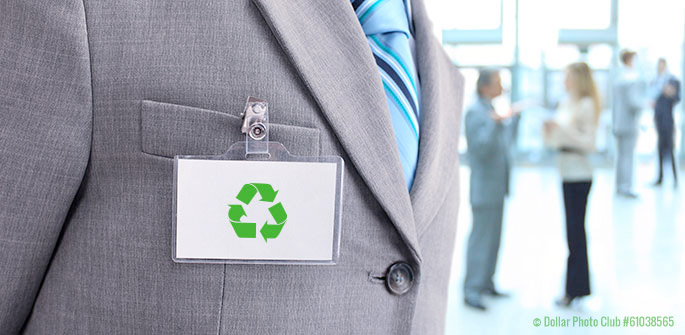
The World Cup is one of the biggest sporting events of all. The millions of people who attend make recycling and other sustainability measures imperative.
Prior to the June 12-13 matches in Brazil, organizers indicated that “going green” was a top priority. An estimated 320 tons of recyclable waste was expected to be processed, and 840 recycling workers were hired to cover the 12 venues. For the first time in the history of the World Cup, the final match was to be played in a stadium powered by solar energy. Companies that wanted to be listed as “green seal” corporate sponsors paid for the right with carbon credits (to offset the expected 1.4 million metric tons of greenhouse gases that would be emitted, directly and indirectly, as a consequence of the event).
This is, of course, not the first time that organizations of mega-sporting events have made sustainability a priority. Germany went to great lengths to reduce the carbon footprint of their 2006 World Cup, with solar powered stadiums, free bicycle parking and match tickets that could also be used on public transportation. The 2008 Olympic games in Beijing showcased environmental technologies and was credited with speeding up environmental reforms in China. Also, London’s 2012 Olympics strengthened sustainability benchmarks for large-scale events.
So how green was the World Cup? According to an article in Scientific American, the results were mixed. They interviewed the founder of a Brazil-based market research company that specializes in sustainability, Fabián Echegaray, who believes the emissions offset plan and green design features were of value. “The problem, he noted, is that FIFA laid out a green agenda that was largely restricted to the 12 stadiums across the country. Everything else – from the air travel emissions to… the absence of a well-functioning public transportation system – runs counter to even the most traditional sustainability criteria.”
Brazil will also host the 2016 Olympic games in Rio. Already a lot has been said about sustainability, and some things have been accomplished. According to the website rio2016, a fully-functioning concrete plant that’s already operating in the Olympic village area, “will produce 90% of the total volume of concrete at its own construction site, reducing carbon emission by 700 tons.”
One of the long-standing complaints about the games has been that buildings erected for the competition often have little or no use following the event. This will change with the 2016 games. The Olympic village will be dismantled and a new development, focused on sustainability, will be constructed around a lagoon that is part of the Olympic layout.
Sustainability will remain a concern for international events. But with increasing global pressure, steps will continue to be made towards reducing environmental impact.




































































































































 Cleaning Up The World Cup
Cleaning Up The World Cup  How The 2012 Summer Olympics Will Change London Forever
How The 2012 Summer Olympics Will Change London Forever  13 Secrets For A Successful Zero-Waste Event
13 Secrets For A Successful Zero-Waste Event 
